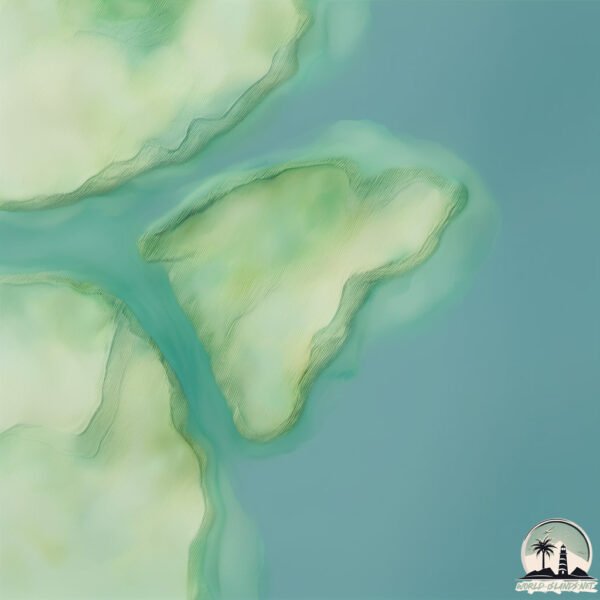Ilhéu de Manassa

Welcome to Ilhéu de Manassa, a Tropical island in the North Atlantic Ocean, part of the majestic Atlantic Ocean. This guide offers a comprehensive overview of what makes Ilhéu de Manassa unique – from its geography and climate to its population, infrastructure, and beyond. Dive into the details:
- Geography and Size: Explore the island’s size and location.
- Climate and Weather: Weather patterns and temperature.
- Topography and Nature: Uncover the natural wonders of the island.
- Infrastructure and Travelling: Insights on reaching, staying, and making the most of your visit.
- News and Headlines: Latest News.
Geography and size of Ilhéu de Manassa
Size: 1.148 km²
Coastline: 5.6 km
Ocean: Atlantic Ocean
Sea: North Atlantic Ocean
Continent: Africa
Ilhéu de Manassa is a Small Island spanning 1.1 km² with a coastline of 5.6 km.
Archipel: Bijagós Islands – Located off the coast of Guinea-Bissau in West Africa, these islands are known for their unique biodiversity and traditional African culture.
Tectonic Plate: Caribbean – Covering the Caribbean Sea and surrounding regions, this plate is bordered by the North American Plate and the South American Plate. Known for seismic activity, including earthquakes and volcanic eruptions, and features like the Puerto Rico Trench.
The geographic heart of the island is pinpointed at these coordinates:
Latitude: 11.51698705 / Longitude: -15.9036831
Climate and weather of Ilhéu de Manassa
Climate Zone: Tropical
Climate Details: Tropical Savanna, Wet
Temperature: Hot
Climate Characteristics: Defined by distinct wet and dry seasons with high temperatures year-round. Pronounced rainfall occurs during the wet season, while the dry season is marked by drought.
Topography and nature of Ilhéu de Manassa
Timezone: UTC±00:00
Timezone places: Europe/Lisbon
Max. Elevation: 3 m
Mean Elevation: 3 m
Vegetation: Mangrove Forest
Tree Coverage: 22%
The mean elevation is 3 m. The highest elevation on the island reaches approximately 3 meters above sea level. The island is characterized by Plains: Flat, low-lying lands characterized by a maximum elevation of up to 200 meters. On islands, plains are typically coastal lowlands or central flat areas.
Dominating Vegetation: Mangrove Forest
Found in coastal areas and river deltas, these unique wetland ecosystems are adapted to saline conditions and are crucial for coastal protection and biodiversity. Ilhéu de Manassa has a tree cover of 22 %.
Vegetation: 1 vegetation zones – Minimal Diversity Island
These islands exhibit the most basic level of ecological diversity, often characterized by a single dominant vegetation type. This could be due to extreme environmental conditions, limited land area, or significant human impact. They represent unique ecosystems where specific species have adapted to thrive in these singular environments.
Infrastructure and Travelling to Ilhéu de Manassa
Does the island have a public airport? no.
There is no public and scheduled airport on Ilhéu de Manassa. The nearest airport is Osvaldo Vieira International Airport, located 50 km away.
Does the island have a major port? no.
There are no major ports on Ilhéu de Manassa. The closest major port is BISSAU, approximately 48 km away.
The mean population of Ilhéu de Manassa is 9 per km². Ilhéu de Manassa is Gently Populated. The island belongs to Guinea-Bissau.
Continuing your journey, Ilha de Maio is the next notable island, situated merely km away.
Guinea-Bissau is classified as Least developed region: Countries that exhibit the lowest indicators of socioeconomic development, with the lowest Human Development Index ratings. The level of income is Low income.
News – Latest Updates and Headlines from Ilhéu de Manassa
Stay informed with the most recent news and important headlines from Ilhéu de Manassa. Here’s a roundup of the latest developments.
Please note: The data used here has been primarily extracted from satellite readings. Deviations from exact values may occur, particularly regarding the height of elevations and population density. Land area and coastline measurements refer to average values at mean high tide.
